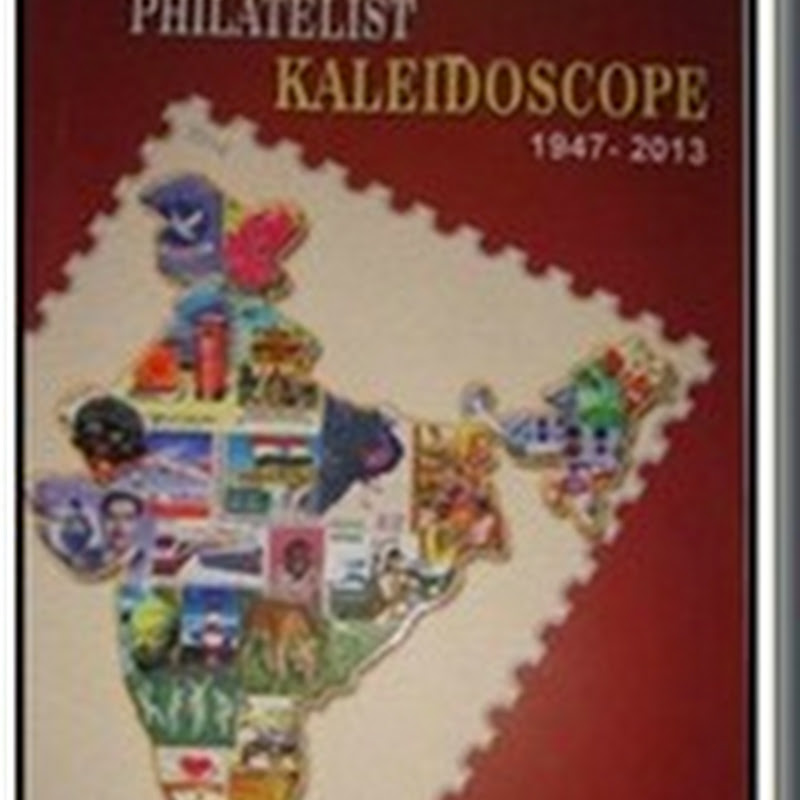The Rubik’s Cube
Date of Issue : 30 January 2025
Here is a beautiful Souvenir sheet issued by Magyar Posta to commemorate the celebration of the 50th anniversary of the patenting of the Rubik’s Cube® with a stamp issue. The puzzle made its international debut at the toy fairs of London, Paris, Nuremberg, and New York in January and February 1980. In the 80's and 90'sthis puzzle was a craze among people of all age groups. Even today it is popular and can be seen on Toy shops.
The
Rubik’s Cube®, or Magic Cube as it was originally called, was invented by the
architect, interior designer, designer, toy designer, and Kossuth and State
Prize-winning Hungarian sculptor Ernő Rubik Jr. An honorary professor, he was
awarded the title of Artist of the Nation and is a member of the European
Academy of Sciences. An expert on innovation and creativity at international
level, his toys were inspired by a child-like inquisitiveness and
imaginativeness. As a designer, he created many logic toys and his most famous
invention, the Rubik’s Cube®, is a captivating puzzle. Rubik applied for a
patent for the Cube on 30 January 1975, which was granted on 31 December 1977.
Success came soon after. It is not a simple game, but takes the cuber straight towards
human creativity. The Cube activates in everyone skills such as concentration,
curiosity, playfulness and the desire to find the solution. The Rubik’s Cube®
became a global craze. It has appeared frequently in books, plays and Hollywood
blockbusters, has been the subject of university courses and is used as a piece
of sporting equipment at world speed solving competitions. Over its past of
almost half a century, it has become the game of a billion people.
The stamp design of the numbered souvenir sheet issued by Magyar Posta shows a scrambled Rubik’s Cube®, while the squares and rectangles forming the frame are in the colours of the Cube. The special first day cover features an image of the so-called Retro Rubik’s Cube®. The Hungarian version of the official logo for the 50th anniversary of the creation of the Rubik’s Cube® (50 Years of the Rubik’s Cube®) appears on the souvenir sheet, the first day cover and the imprint of the postmark on the cover.
Rubik's invention
In the mid-1970s, Ernő Rubik worked at the Department of Interior Design at the Academy of Applied Arts and Crafts in Budapest.Although it is widely reported that the Cube was built as a teaching tool to help his students understand 3D objects, his actual purpose was solving the structural problem of moving the parts independently without the entire mechanism falling apart. He did not realise that he had created a puzzle until the first time he scrambled his new Cube and then tried to restore it.Rubik applied for a patent in Hungary for his "Magic Cube" (Hungarian: bűvös kocka) on 30 January 1975,and HU170062 was granted later that year.
The first test batches of the Magic Cube were produced in late 1977 and released in toy shops in Budapest. Magic Cube was held together with interlocking plastic pieces that prevented the puzzle from being easily pulled apart, unlike the magnets in Nichols's design. With Ernő Rubik's permission, businessman Tibor Laczi took a Cube to Germany's Nuremberg Toy Fair in February 1979 in an attempt to popularise it. It was noticed by Seven Towns founder Tom Kremer, and they signed a deal with Ideal Toys in September 1979 to release the Magic Cube worldwide. Ideal wanted at least a recognisable name to trademark; that arrangement put Rubik in the spotlight because the Magic Cube was renamed after its inventor in 1980.
The puzzle made its international debut at the toy fairs of London, Paris, Nuremberg, and New York in January and February 1980.
After its international debut, the progress of the Cube towards the toy shop shelves of the West was briefly halted so that it could be manufactured to Western safety and packaging specifications. A lighter Cube was produced, and Ideal decided to rename it. "The Gordian Knot" and "Inca Gold" were considered, but the company finally decided on "Rubik's Cube", and the first batch was exported from Hungary in May 1980.
The packaging had a few variations depending on the country, most popular being a clear plastic cylinder but cardboard versions were also used. The cube itself had slightly different variations in the order of the colours (Western vs. Japanese colour scheme where blue/yellow are switched) and some of the cubes did not have a white piece logo.
1980s Cube craze
After the first batches of Rubik's Cubes were released in May 1980, initial sales were modest, but Ideal began a television advertising campaign in the middle of the year which it supplemented with newspaper advertisements.At the end of 1980, Rubik's Cube won a German Game of the Year special award and won similar awards for best toy in the UK, France, and the US By 1981, Rubik's Cube had become a craze, and it is estimated that in the period from 1980 to 1983 around 200 million Rubik's Cubes were sold worldwide.[ In March 1981, a speedcubing championship organised by the Guinness Book of World Records was held in Munich,and a Rubik's Cube was depicted on the front cover of Scientific American that same month. In June 1981, The Washington Post reported that Rubik's Cube is "a puzzle that's moving like fast food right now ... this year's Hoola Hoop or Bongo Board",and by September 1981, New Scientist noted that the cube had "captivated the attention of children of ages from 7 to 70 all over the world this summer."
As most people could solve only one or two sides, numerous books were published including David Singmaster's Notes on Rubik's "Magic Cube" (1980) and Patrick Bossert's You Can Do the Cube (1981). At one stage in 1981, three of the top ten best selling books in the US were books on solving Rubik's Cube,and the best-selling book of 1981 was James G. Nourse's The Simple Solution to Rubik's Cube which sold over 6 million copies. In 1981, the Museum of Modern Art in New York exhibited a Rubik's Cube, and at the 1982 World's Fair in Knoxville, Tennessee a six-foot Cube was put on display. ABC Television even developed a cartoon show called Rubik, the Amazing Cube.In June 1982, the First Rubik's Cube World Championship took place in Budapest and would become the only competition recognized as official until the championship was revived in 2003.
In October 1982, The New York Times reported that sales had fallen and that "the craze has died",and by 1983 it was clear that sales had plummeted. However, in some countries such as China and the USSR, the craze had started later and demand was still high because of a shortage of Cubes.



































No comments:
Post a Comment